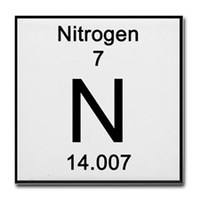
Radioactivity: Types
Quiz
•
Chemistry
•
9th - 12th Grade
•
Practice Problem
•
Medium
Standards-aligned
Marissa Velez
Used 13+ times
FREE Resource
Enhance your content in a minute
12 questions
Show all answers
1.
MULTIPLE CHOICE QUESTION
30 sec • 1 pt

An isotope of an element has the same number of _________, but a different number of _________.
Tags
NGSS.HS-PS1-8
2.
MULTIPLE CHOICE QUESTION
1 min • 1 pt

What type of radioactive decay is shown here?
Tags
NGSS.HS-PS1-8
3.
MULTIPLE CHOICE QUESTION
1 min • 1 pt

Which type of radiation releases an electron?
Tags
NGSS.HS-PS1-8
4.
MULTIPLE CHOICE QUESTION
30 sec • 1 pt

What type of radiation can be stopped by clothing or a piece of paper?
5.
MULTIPLE CHOICE QUESTION
1 min • 1 pt

What particle is released when an unstable isotope undergoes alpha radiation?
Tags
NGSS.HS-PS1-8
6.
MULTIPLE CHOICE QUESTION
1 min • 1 pt
Which is NOT a characteristic of gamma radiation?
Tags
NGSS.HS-PS1-8
7.
MULTIPLE CHOICE QUESTION
1 min • 1 pt

What type of decay is shown here
Tags
NGSS.HS-PS1-8
Create a free account and access millions of resources
Create resources
Host any resource
Get auto-graded reports

Continue with Google

Continue with Email

Continue with Classlink

Continue with Clever
or continue with

Microsoft
%20(1).png)
Apple
Others
Already have an account?
Similar Resources on Wayground

12 questions
Nitrogen and ammonia
Quiz
•
11th Grade - University

15 questions
Module 9 Review
Quiz
•
9th Grade

10 questions
Quantum Mechanical Model
Quiz
•
9th Grade

10 questions
Which is it? (Biomolecules)
Quiz
•
10th Grade

15 questions
Module 7 - Hydrocarbons
Quiz
•
12th Grade

15 questions
Name the chemichal element
Quiz
•
9th Grade

16 questions
Chemistry Y8 C8
Quiz
•
7th - 10th Grade

10 questions
Strength of Acids and Alkalis
Quiz
•
10th Grade
Popular Resources on Wayground

10 questions
Honoring the Significance of Veterans Day
Interactive video
•
6th - 10th Grade

9 questions
FOREST Community of Caring
Lesson
•
1st - 5th Grade

10 questions
Exploring Veterans Day: Facts and Celebrations for Kids
Interactive video
•
6th - 10th Grade

19 questions
Veterans Day
Quiz
•
5th Grade

14 questions
General Technology Use Quiz
Quiz
•
8th Grade

25 questions
Multiplication Facts
Quiz
•
5th Grade

15 questions
Circuits, Light Energy, and Forces
Quiz
•
5th Grade

19 questions
Thanksgiving Trivia
Quiz
•
6th Grade
Discover more resources for Chemistry

25 questions
Unit 4/5-Covalent Bonding/Nomenclature
Quiz
•
10th Grade

20 questions
Naming Ionic Compounds
Quiz
•
10th - 12th Grade

20 questions
Ions
Quiz
•
10th Grade

25 questions
VSPER Shape Quiz
Quiz
•
10th Grade

17 questions
Periodic Trends
Quiz
•
10th Grade

14 questions
PERIODIC TRENDS
Quiz
•
11th Grade

61 questions
KAP Chemistry Covalent Test Review
Quiz
•
10th Grade

27 questions
Unit 4/5 Covalent Bonding/Nomenclature
Quiz
•
10th - 12th Grade



